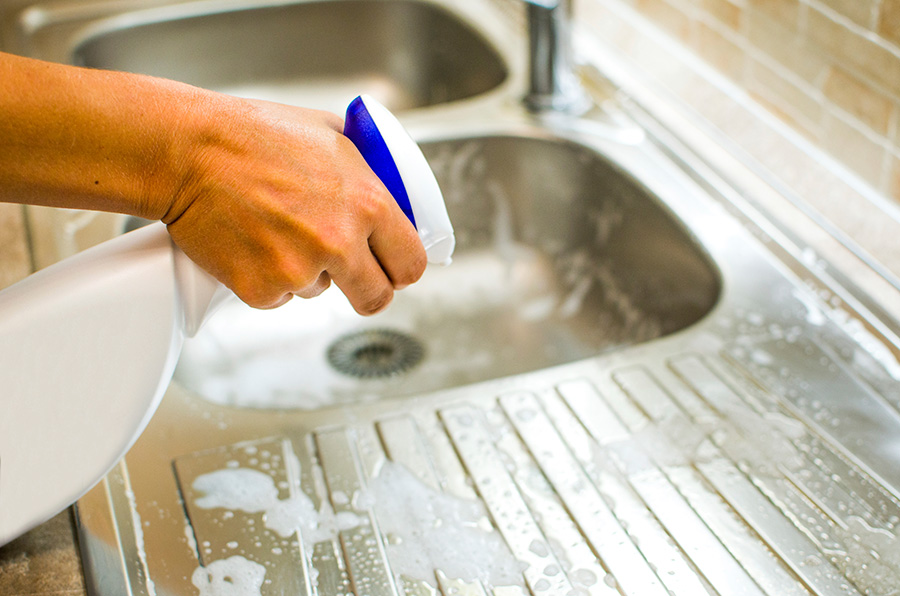
5 Sneaky Kitchen Items Riddled With Germs
The kitchen – where all of the food preparation for you and your family take place. It should be a well kept, clean environment seeing as you’re handling your food that you will be consuming and want to keep the area as clean as humanly possible. However, what people don’t realize is that it is one of the most germ-infested rooms in the home!
1. Kitchen Faucet
Despite being a place thought to be a safe haven to germs and a cleaning zone for most of your dinnerware, it is actually one of the more contaminated places in your home and harbors to thousands of icky bacteria! It’s actually, on some levels, dirtier than your bathroom. What people don’t realize is that throughout all of your preparation of food items, like rinsing raw fruits and vegetables and even raw meats, these items actually carry potential pathogens that can make you extremely sick. These little guys stick around in your sink unless you take the proper measures to thoroughly clean and disinfect your sink.
My advice: At all possible moments, especially after preparing food, wipe down your sink and specifically the faucets with anti-bacterial spray or soap. Make sure to use hot water.
2. Soap Dispensers
Now that I have you scared, the first thing you want to do is clean your hands. But, wait! The soap dispensers are another breeding ground for bacteria! Say after you rinse your chicken in the sink, the first thing you want to do is reach for the soap to clean your hands off, right? Well, bacteria and other germs can escape on to the dispenser and leave the very item you thought would bring you sanitation is now infected.
My advice: Try using your wrist to push down on the nozzle instead of your infected fingers.
3. Sponge
Ah the sponge, the very symbol of the anti-germ. The very item you use to clean all of your kitchenware to sanitize it, actually contains an obscene amount of bacteria. It is cleaning the germs off of your silverware, which sometimes take a ride on your sponge. A mistake however, is that people don’t follow up with proper sanitizing methods to disinfect the sponge after use.
My advice: Make sure that after cleaning your dishes, wring out any excess water in it and place onto a sponge holder if you have one. Remember to kill off bacteria by placing it in a microwave for two minutes.
Tip: Use a separate sponge when cleaning out your sink, separate from the one you use to wash your dishes with.
4. Dish Towel
Dish towels have the potential to hold bacteria and germs within their fibers. We tend to use and reuse and reuse these towels again and sometimes before they get a chance to re dry. The damp towels then have a chance to increase the number of germs it can hold and without being properly cleaned or sanitized.
My advice: Use paper towels for your hands after you wash them after handling raw items. Dispose of the waste immediately. For those continuing to use hand towels, make sure to replace them frequently and wash them thoroughly with hot water and soap.
5. Refrigerator Seal
This is one that people don’t think about very often. Your refrigerator seal acts as a defense against germs and pathogens from entering your refrigerator. However, sometimes dampness in the air or the lack of cleaning methods to your refrigerator leave these seals susceptible to the growth of mold and other germs. It’s important to not neglect these areas as they are close to the very food you consume on a daily basis.
My advice: Make sure to wipe the seals once a week with a disinfectant spray.
Now that you have these specific locations that are breeding grounds for germs, bust out that anti-bacterial spray, get those gloves and mask and get to work! Scrub away those germs and get your home one step closer to being germ-free.